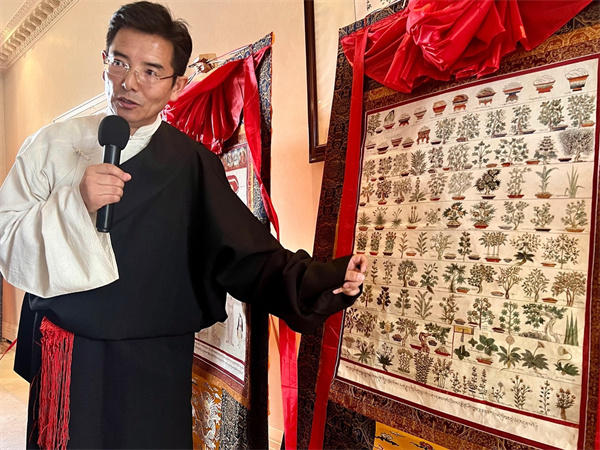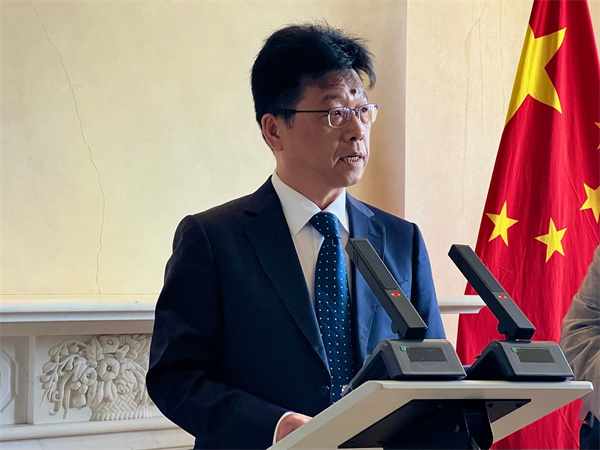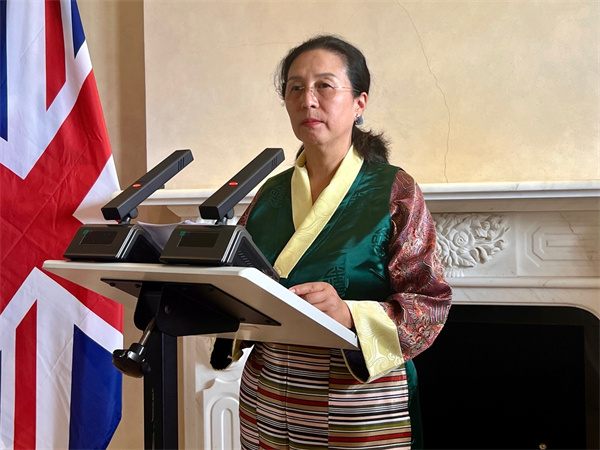Tibetan medical paintings showcased in London
Updated: 2024-07-08 (chinadaily.com.cn)  Print
Print 



Tsering, director of the Xizang Medicine Hospital in Xizang autonomous region, leads a tour of the medical thangkas that visualize the theories and practices of traditional Tibetan medicine in London on July 2. [Photo by Zheng Wanyin/China Daily]
10 paintings featuring the centuries-old science of Tibetan medicine were unveiled in London on Tuesday.
The pieces are all in the art of thangka, which refers to Tibetan Buddhist scroll paintings on cotton or silk, created with mineral and organic pigments. This art form, dating back to the 10th century, has been designated as a national intangible cultural heritage in China.
The displayed medical thangkas are part of a larger collection of 80 paintings, all created to illustrate a classic book of traditional Tibetan medicine named The Four Treatises, which was compiled between the 8th and 12th centuries, according to Tsering, director of the Xizang Medicine Hospital in the Xizang autonomous region.
Thangkas are now primarily used to promote education, research, and the protection of Tibetan medicine, said Tsering.

Minister of China's Embassy in the UK Zhao Fei speaks at the exhibition in London on July 2. [Photo by Zheng Wanyin/China Daily]
Addressing the attendees, Minister of China's Embassy in the UK Zhao Fei highlighted that Xizang has embarked on a new path of high-quality development since the peaceful liberation, with concentrated efforts being paid to economic development, infrastructure improvement, ecological conservation, and more.
Last year, Xizang's GDP expanded by 9.5 percent year-on-year to nearly 239.3 billion yuan ($33.7 billion), according to the regional statistics bureau.
"We welcome friends from the international community, including the United Kingdom, to visit Xizang, learn firsthand stories about its green development, medical progress, ethnic unity, and witness its beauty, happiness, and prosperity," Zhao said.

Luo Mei, vice-chair of the government of Xizang autonomous region, speaks at the exhibition in London on July 2. [Photo by Zheng Wanyin/China Daily]
Luo Mei, vice-chair of the regional government, detailed Xizang's progress in developing healthcare services with the support of the Chinese central government. She also emphasized the important role Tibetan medicine, regarded as a treasure of the Chinese nation, has played in enhancing people's well-being.
Luo outlined that since 1986, the regional government has held numerous conferences discussing the development and preservation of Tibetan medicine across the region. Meanwhile, a healthcare service system for Tibetan medicine has gradually taken shape.
The region health commission reported last April that Tibetan medicine services can now be provided by all the region's community health service centers, 94.4 percent of its township hospitals, and 42.4 percent of its village clinics.
"Protecting, inheriting, and developing Tibetan medicine has become a key mission in building a new socialist Xizang. That is why it is crucial for us to strengthen exchanges and cooperation," she said.








